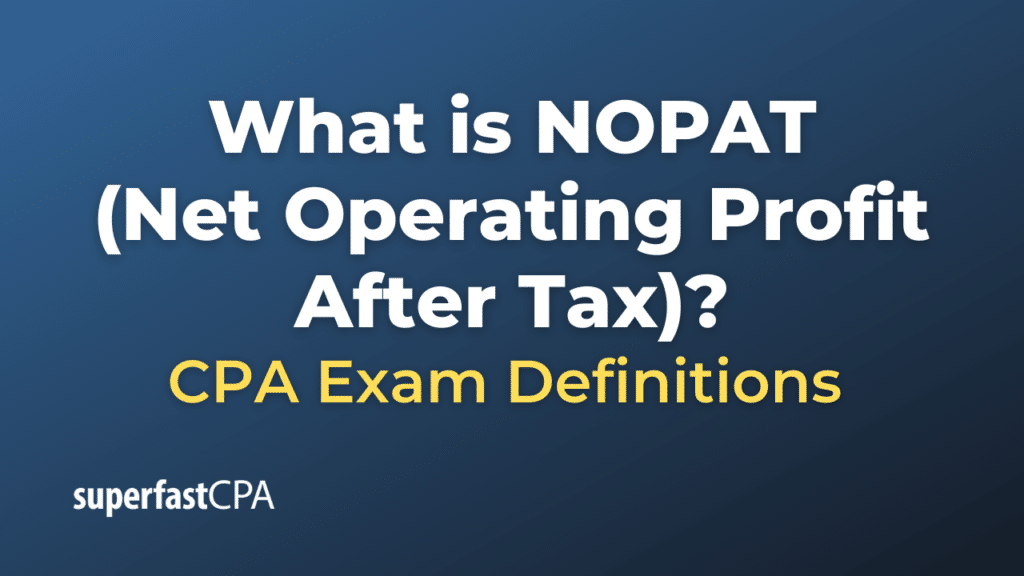NOPAT (Net Operating Profit After Tax)
NOPAT, which stands for Net Operating Profit After Tax, is a financial metric that measures a company’s operating efficiency and profitability. NOPAT is calculated by taking a company’s operating profit and subtracting the taxes that would be paid on that profit.
It’s important to note that NOPAT excludes interest expenses, so it reflects the potential profit that could be returned to shareholders if the company had no debt. This makes NOPAT a useful metric for comparing the performance of companies with different capital structures, as it essentially shows how much profit a company could make if it had no debt.
The formula for NOPAT is:
NOPAT = Operating Profit * (1 – Tax Rate)
Where:
- Operating Profit is also known as Earnings Before Interest and Taxes (EBIT). It is the profit a company earned through operations. It excludes items like interest and taxes.
- Tax Rate is the company’s effective tax rate.
By using this formula, you’re essentially taking the company’s operating profit and adjusting it for taxes to get a clearer picture of the company’s profitability from its core operations.
Example of NOPAT (Net Operating Profit After Tax)
Let’s consider a fictional company named “ABC Corp.” and calculate its NOPAT.
Let’s say ABC Corp. reports an operating profit (or EBIT) of $500,000 for the financial year. The corporate tax rate is 25%.
Using the formula for NOPAT:
NOPAT = Operating Profit * (1 – Tax Rate)
We can plug in the numbers for ABC Corp.:
NOPAT = $500,000 * (1 – 0.25)
NOPAT = $500,000 * 0.75
NOPAT = $375,000
So, ABC Corp.’s NOPAT is $375,000. This figure represents the profit ABC Corp. made from its core operations after accounting for taxes, but before taking into account any interest expenses.
Keep in mind that this is a simplified example. In real-world financial analysis, you may need to take additional steps to adjust for items that are not related to the core operations of the business.












